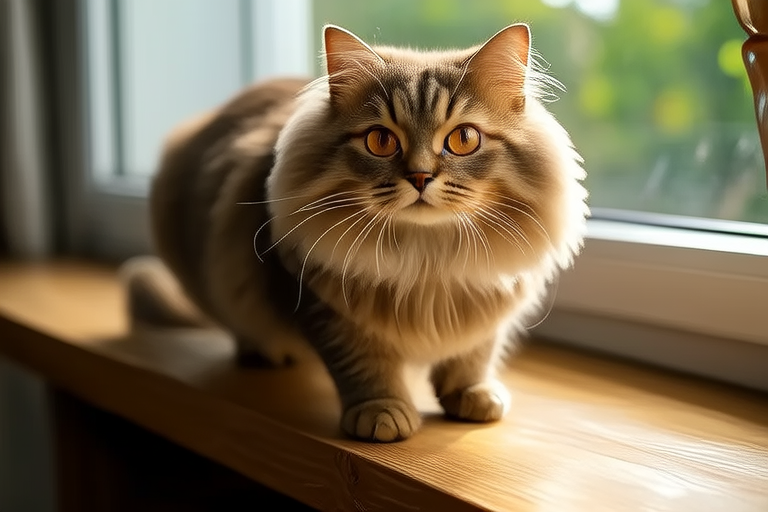Turkish Angora: Where Elegence Meets Playfulness – A Complete Guide for Owners
Welcome to the world of Turkish Angoras, a breed that seamlessly blends elegance with playfulness. Originating from the majestic mountains of Turkey, these cats have captivated hearts with their striking appearance and delightful personalities for centuries. The Turkish Angora, known for its long, silky coat and large, expressive eyes, has been a symbol of grace and charm. This article will provide you with a comprehensive guide to understanding, caring for, and enjoying your Turkish Angora.
Origins and Characteristics
The Turkish Angora traces its roots back to ancient times, with evidence of similar breeds appearing in Egyptian tombs and Roman mosaics. These cats were revered by the Ottoman Empire, often kept as companions in royal harems. Their name comes from Ankara, the capital city of Turkey, where they were particularly popular. Turkish Angoras are medium-sized cats with a slender yet muscular build. They have a long, flowing coat that can come in various colors, including white, black, red, and blue. Their large, almond-shaped eyes, which can be blue or green, add to their striking appearance. Despite their elegant demeanor, Turkish Angoras are incredibly playful and curious, making them perfect companions for active households.
Physical Characteristics
One of the most distinctive features of the Turkish Angora is its luxurious, semi-long coat. This coat requires regular grooming to prevent matting and tangles. Their body structure is lean and athletic, with long legs and a graceful tail. The head is triangular with high cheekbones and large ears, giving them a refined look. Their eyes, typically blue or green, are wide-set and expressive, adding to their captivating appearance. The breed’s agility and speed make them excellent hunters and climbers, traits that are evident in their playful behavior.
Temperament
Turkish Angoras are known for their affectionate and social nature. They enjoy being around people and are often found following their owners from room to room. While they are independent, they thrive on interaction and attention. These cats are highly intelligent and can be trained to perform simple tricks or respond to commands. Their playful side is evident in their love for toys and games, especially those involving movement or chasing. They are also very vocal, often communicating their needs or desires through chirps, meows, and trills.
Health Considerations
Despite their overall good health, Turkish Angoras are prone to certain genetic conditions. Hypertrophic cardiomyopathy (HCM), a heart disease, is one of the more serious concerns. Regular veterinary check-ups are essential to monitor their heart health. Another common issue is progressive retinal atrophy (PRA), a degenerative eye disease. Early detection and treatment can help manage these conditions effectively. Additionally, their long coats require regular grooming to prevent hairballs and skin issues.
Grooming Tips
Grooming a Turkish Angora is both a necessity and a pleasure. Their long, silky fur demands regular brushing to prevent mats and tangles. Use a slicker brush and a comb to remove loose hair and distribute natural oils. Bathing should be done sparingly, as over-bathing can strip their coat of its natural oils. When bathing, use a gentle cat shampoo and ensure thorough rinsing to avoid irritation. Clipping their nails and cleaning their ears regularly will also contribute to their overall hygiene.
Nutrition and Exercise
A balanced diet is crucial for maintaining the health and energy levels of Turkish Angoras. High-quality cat food that meets their nutritional requirements is recommended. Consult with your veterinarian to determine the appropriate portion sizes based on age, weight, and activity level. Fresh water should always be available. Exercise is equally important for their well-being. Interactive toys, climbing trees, and play sessions with their owners will keep them physically and mentally stimulated. Providing a variety of toys that encourage jumping, pouncing, and climbing will help maintain their agility and fitness.
Socialization and Training
Early socialization is key to ensuring your Turkish Angora becomes a well-adjusted and confident cat. Expose them to different environments, sounds, and people from an early age. This will help them adapt to new situations and reduce anxiety. Training can be an enjoyable way to bond with your cat. Positive reinforcement techniques, such as treats and praise, work best. Teaching basic commands like ‘come’ and ‘stay’ can enhance communication and safety. Consistency and patience are essential when training your Turkish Angora.
Common Behavioral Issues
Like any breed, Turkish Angoras may exhibit some behavioral challenges. Aggression, litter box issues, and excessive vocalization are among the most common problems. Understanding the underlying causes of these behaviors is crucial for addressing them effectively. For instance, aggression might stem from fear or territorial instincts, while litter box issues could be related to cleanliness or discomfort. Consulting with a professional trainer or behaviorist can provide valuable insights and solutions.
The Bond Between Owner and Cat
The bond between a Turkish Angora and their owner is uniquely special. Their affectionate and playful nature makes them wonderful companions. Owning a Turkish Angora brings joy and laughter into your home. They form deep emotional connections with their owners, providing comfort and companionship. The mutual respect and understanding that develops between you and your Turkish Angora enriches both lives. Embrace the journey of raising a Turkish Angora, and you’ll find yourself enriched by their presence.
